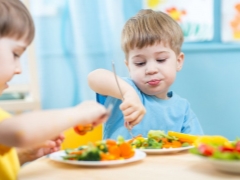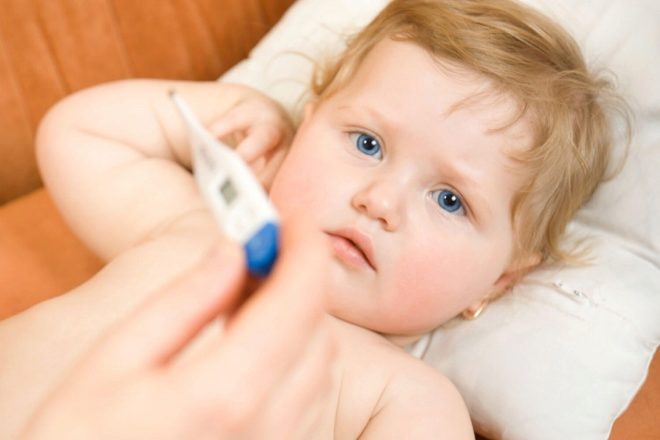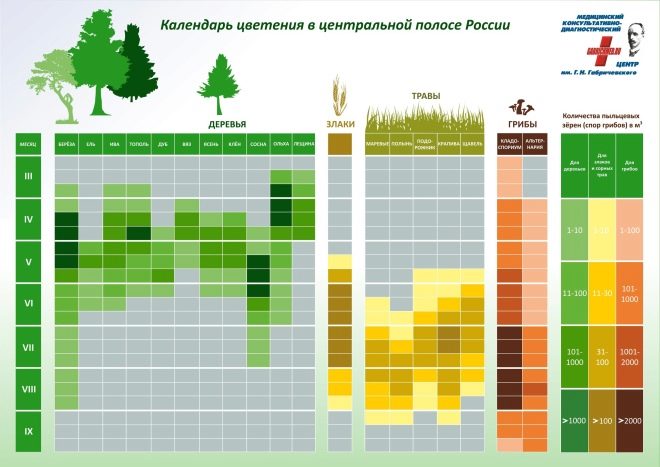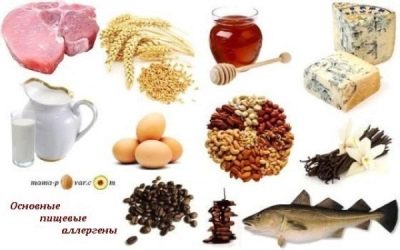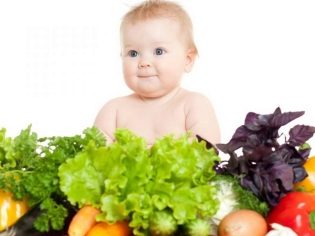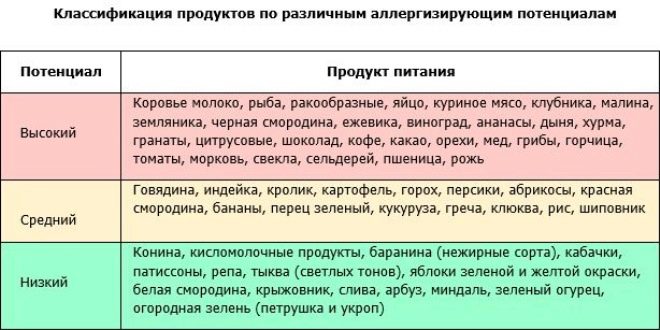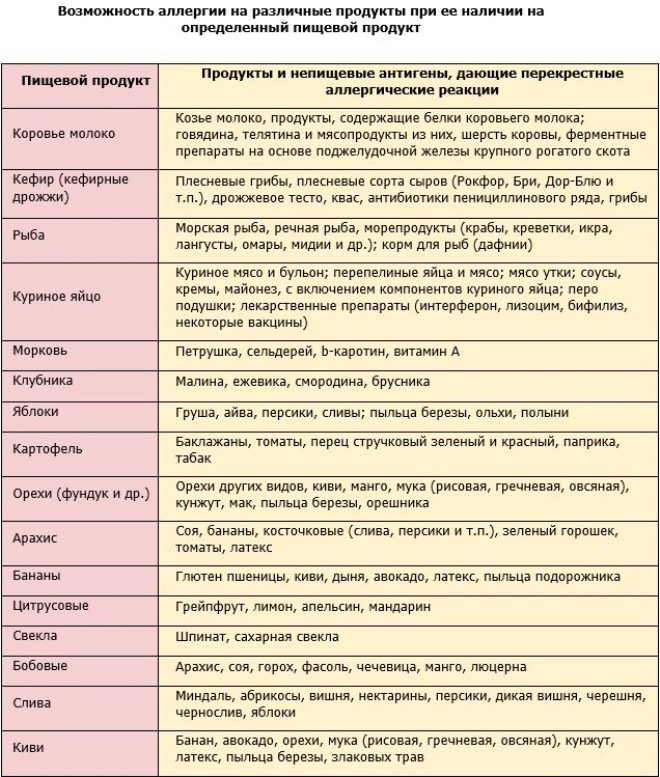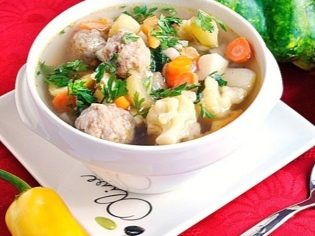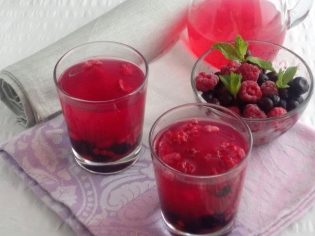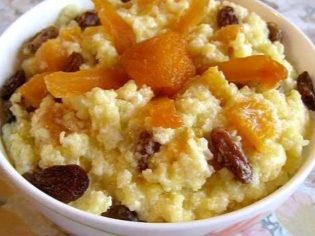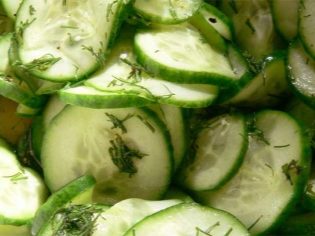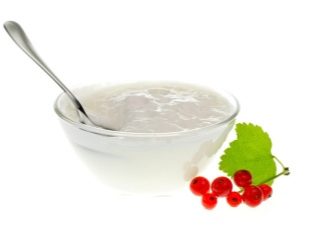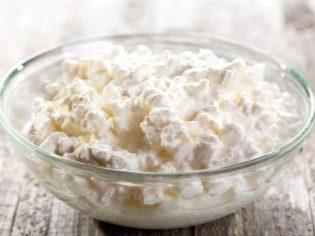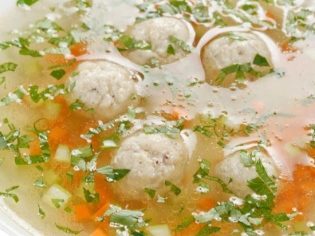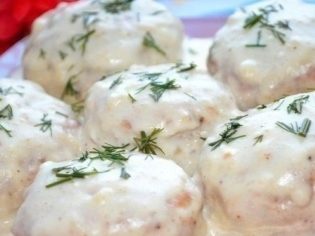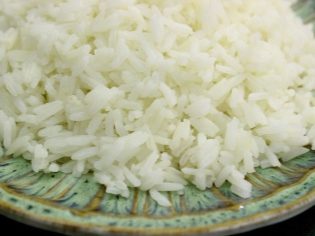Hypoallergenic diet for children
Allergic diseases often cause a rash on the skin of a child. They are very itchy, which brings significant discomfort to the baby’s body. Combing red spots, it can easily cause an infection under the skin. In such cases, more severe inflammatory reactions already occur. Such a secondary infection can cause streptoderma or systemic damage to the body by staphylococcus.
What are dangerous rash on the skin and what triggers their appearance?
Often, various types of allergic reactions cause the appearance of red bubbles or blemishes on the skin. When an allergen product enters the children's body, after a few minutes, a whole cascade of inflammatory changes starts. Such reactions are called hypersensitivity. They are fast and slow type.
When the allergen is first ingested, the protective blood cells are not yet ready to meet with it. For this reason, an allergic reaction does not occur immediately, but after a while. This usually occurs after 6-8 hours from the moment the allergen enters the body.
The cells of the immune system, recognizing the foreign component allergic, immediately begin to actively deal with it. A large number of different biological substances are released into the bloodstream, which trigger the inflammation process.
A large number of cells of the immune system are in the blood and in the skin. When ingested alien allergenic substances, they enter the battle first. A few hours after the onset of the disease, the skin reacts with red itchy elements. It can be papules, vesicles, specks. It all depends on the individual sensitivity and tenderness of the skin of the child.
Infants usually have more frequent spots. In most cases, they are localized on the extensor surfaces of the forearms and hands, buttocks, hands, and on the delicate skin of a child below the chin, on the neck.
In children at the age of 2 years, spots are often formed in combination with bubbles. This is largely due to the structure of the skin and subcutaneous tissue of a child of this age. Kids become restless, capricious. Children of kindergarten age (4-5 years) in the period of exacerbation of an allergic reaction should not attend preschool for the entire period of treatment. In the kindergarten, they can easily pick up a secondary infection or bring microorganisms into the wounds, combing the itchy spots on the skin.
In severe cases of allergic reactions, it is not only skin lesions that appear. In children, the temperature can rise to even 38-39 degrees. There is redness in the throat, allergic rhinitis, dry cough. In case of allergic rhinitis and laryngitis, you should definitely show the child to the immunologist-allergist. He will conduct additional examinations on the subject of individual sensitivity to specific allergens. After that, the doctor will prescribe a full range of measures and recommend antiallergic diet.
Special features
Hypoallergic diet, among others, is quite strict. As the child’s body matures, new hypersensitivity to various products.
- If you have allergies on oranges over time, an intolerance of all citrus fruits is formed.
- With allergies on chicken eggs There is a sensitivity to all products (including baked goods) that contain chicken yolk or melange. In 5% of babies, cross-allergy to quail eggs is also possible. In this case, you want to completely eliminate the eggs from the diet of the child and monitor the composition of all dishes, where any egg components can be added.
If your child had a cross-sensitivity during allergy tests, the immunologist will definitely recommend that you exclude all combinations that may develop an allergic reaction.
- For children with allergies on flowering trees should be completely excluded from the diet any shrub fruits and berries. Cells of the immune system, having a system memory, when injected into the body of any substance from the banned list will consider it an allergen. An allergic reaction in a child will occur equally sharply when pollen blossoms or after eating a plum or apple.
Try to avoid contact with the allergen, given the flowering time of the trees.
Recently, doctors have noted that many children have increased the number of cases of intolerance to dairy products. So kiddies assigned dairy-free diet. She is shown to all babies with milk allergies. It can not be called protein-free, it is more classified as low-protein.
In the nutrition of babies on a dairy-free diet, one should carefully monitor the optimal intake of protein in the body. Add more meat products and side dishes containing vegetable protein. This may be lean meat or fish (with good tolerance), poultry.
From vegetable protein, you can choose green beans or regular beans and well boiled pea porridge. Enter into the diet green peas: it contains much less substances that can cause allergies.
Grocery list
Currently, there are many classifications of allergenic products. They divide all products into different categories (depending on the possibility of causing allergic reactions).
Every day, scientists add new sources of allergens to their lists. This is due to the fact that every year the number of children with allergopathology increases several times.
The children born in the city are many times more likely to suffer from intolerance to various products than the rural ones. Doctors explain this by the impact of adverse environmental factors and high levels of pollution in large cities.
Every year, all the world's leading scientists, doctors and nutritionists gather at international conferences and congresses to discuss the nutritional problems of children prone to the development of allergic reactions. Special tables were drawn up in which all products are entered taking into account their possible negative impact on the child’s immune system:
- Products with a high ability to cause allergic reactions are called highly allergenic.
- Foods that cause allergies are less likely to - medium sensitizing.
- Products that are almost incapable of causing an allergic reaction in a child (or cause in a much smaller number of cases) are called neutral.
The products that can be safely included in the diet of a child with food allergies include:
- All fruits and vegetables are green. White fruits and berries. An excellent basis for any side dish for children with a tendency to allergic reactions is broccoli, as well as cauliflower. Potatoes are also suitable, but they contain a lot of starchy substances. Better when cooking mashed potatoes mix cauliflower with a small amount of potatoes, preferring cabbage.
- Protein products: lean beef meat, with caution - white fish varieties.Red (and especially sea) fish - under the ban! Its use can provoke an allergic reaction. You should not give your baby seafood or sea kale. Adding them to the diet often causes cross-allergy.
- With a good tolerance of dairy products - sour milk with a small percentage of fat (cottage cheese, kefir, sour milk). All types of cheese, sour cream, homemade butter and margarine should be excluded. They can provoke food allergies and adverse effects on the liver and gallbladder. Frequent use of such products can cause chronic diseases of the gastrointestinal tract.
- Cereal cereals and cereals. They are selected strictly individually. It should be noted that they may be contraindicated for children with allergies and gluten intolerance. Buck and rice should be introduced into the diet with caution, since they have a moderate allergenic potential.
If, after the introduction of cereal lure, the skin of the child remains clear and pink in color, it will almost certainly tolerate these products. Be sure to monitor the condition of the skin of the baby and his mood after the introduction of each new complementary foods. This will allow you to identify allergies to a particular new food product.
Tips for parents of babies 3-6 years
If the baby is prone to developing allergic reactions or you, close relatives have serious allergic diseases, pay attention to what you are preparing for the child. In any case, you should consult and show the baby to the allergist immunologist. He will conduct a series of simple and painless scarification tests, which will allow to identify all the cross-variants of allergens.
There are even special panels, in which all allergens are brought in according to certain antigenic characteristics. Such a study is very convenient and allows you to set all prohibited products from several groups at once with high accuracy.
It is important to note that such a diet is worth a lifetime. The human immune system is very accurate. Even after one meeting with an allergen, his memory is preserved for life. With each new encounter with this product, the body reacts more and more.
Allergic reaction starts almost instantly. For a long course of the disease, damage to other organs is already characteristic: the respiratory and cardiovascular systems are most often affected, and in this case more serious treatment is required from a doctor.
What should remember the parents of children of preschool age?
- Carefully plan and create a menu for your child.. Exclude all products that do not suit him. Keep a diary and record all the changes that occur in the baby after a meal. Reflect the condition of his skin, as well as the estimated time when manifestations occur. This will make it easier for you to understand which foods have allergenic signs and can harm children's bodies.
- If a child attends kindergarten, be sure to tell the garden health worker that your baby is allergic. Describe what products are contraindicated. The caregiver and the medical professional should carefully monitor what the baby eats when they are away from home. In the garden, they are responsible for his health. It would be great if in the garden there was a choice of dishes. Now this principle is practiced often. If not, the health care professional should eliminate the side dish or main course for allergic children, replacing it with something else.
- All children with allergies or intolerance to certain products should be supervised by an immunologist. With a quiet course of the disease (without frequent exacerbations and rashes), visit a doctor at least 1 time per year. This is necessary for dynamic monitoring of the state of the child's body.
- Do not indulge the whims of a child! All babies love sweets.However, it should be understood: if the baby has an allergy, then such self-indulgence can even be deadly. In severe cases, after meeting with the allergen, the children's body may respond to angioedema or laryngeal spasm. This is a very dangerous complication that requires the immediate provision of qualified medical care.
If suddenly, after eating or snacking, your baby began to choke or turn blue, immediately call a child emergency room. It is necessary to act very quickly, as the time to save a child’s life goes for a minute.
Teach your child healthy eating habits. At the table it is better to eat about the same food that the baby eats. So you show him that he is not at all sick or deprived of anything. It's just a healthy diet, and so everyone eats. Be sure to praise your baby when he eats a good and healthy foods.
Watch out for yourself! If you allow yourself to have a snack or drink tea with chocolates or cakes, then do not be surprised why your baby is reaching for a “snack”. All babies from two years of behavior are similar to little monkeys, due to the development of their psyche. In their behavior, they accurately copy those around them or their parents. Be a real good example for your baby. His health depends on you now and in the future.
Ado menu for children over 1 year old
In Soviet times, the famous scientist and pathophysiologist A.D. Ado began to study the problems of allergic diseases and the development of special diets that can prevent new exacerbations of the disease.
It was he who first established that there are certain products that are able to trigger a series of inflammatory changes in the body and easily cause an allergic reaction. He also noted that there are products with opposite properties. They are safer for the body and almost do not cause allergies.
The result of his scientific work was the Ado nutrition system. This is a prototype of a hypoallergenic diet. It excludes all products that can cause skin rashes, with the mandatory inclusion of neutral products. Ado made his diet so that all incoming substances were selected in sufficient quantity for active growth and development of the child's body.
The advantages of his methodology include:
- detailed analysis of all productswhich trigger allergic reactions, and their complete exclusion from the children's menu;
- exclusion from the diet of all allergens immediately allows you to quickly remove inflammation and eliminate all adverse symptoms of the disease;
- possibility of gradual introduction of new products, with the mandatory control of the child after such an introduction.
Of course, there are downsides:
- Purpose of the diet all children without prior examination and laboratory determination of individual sensitivity to different products. Ado made his diet at the end of the twentieth century, when there was not yet a wide range of laboratories for conducting such high-precision tests.
- Low specific sensitivity. The diet is applied to all children and adolescents without regard to the individual level of immunity and associated chronic diseases.
Among the most frequent allergens A.D. Ado produces cow's milk, egg yolk and fish.
Sometimes hypersensitivity occurs to gluten or wheat, banana and rice proteins. The body's sensitivity to potatoes, Greek, corn, soybeans and legumes is less common.
In this case, A.D. Ado highlights foods that, if you are allergic, should be treated with caution to “cross” foods in the diet.
Treatment table for Ado can be represented as follows. Please note that occasionally the menu includes products with a moderate allergenic potential.
Carefully monitor the condition of your child, because in the preparation of the diet should be taken into account individual characteristics: there is no universal menu suitable for all children.
First day of the week
- Breakfast: Oatmeal on water. A pair of dry crackers.
- Lunch: Yogurt.
- Dinner: Lean beef soup (without carrots). Cucumber, Chinese cabbage and corn salad, seasoned with vegetable oil.
- Tea time: Pear jelly with dry biscuits.
- Dinner: Steamed dumplings of lean lamb with chopped cauliflower. Compote from apples.
Second day
- Breakfast: Buckwheat Flakes with Kefir.
- Lunch: Sandwich with butter.
- Dinner: Boiled lean veal with mashed potatoes and cauliflower. Berry Kissel.
- Tea time: Low-fat cottage cheese with sugar.
- Dinner: Braised low-fat lamb with vegetables and peas.
The third day
- Breakfast: Millet porridge with dried fruit.
- Lunch: Apple baked in the oven.
- Dinner: Beef meatballs with noodles. Salad of zucchini and greens.
- Tea time: Cake cookies with kefir.
- Dinner: Stewed with vegetables and boiled buckwheat.
Fourth day
- Breakfast: Buckwheat flour pancakes with yogurt.
- Lunch: A glass of kefir.
- Dinner: Soup with sour cabbage and boiled veal. Cucumber and dill salad.
- Tea time: Bun with kefir.
- Dinner: Veal rolls with vegetable filling.
Fifth day of the week
- Breakfast: Pancakes with curd.
- Lunch: Crackers with savory tea.
- Dinner: Stewed stew with horse meat. A slice of bran bread.
- Tea time: Yogurt without additives with a small amount of sugar.
- Dinner: Oven baked low-fat beef patties with rice.
Sixth day
- Breakfast: Multizlakovaya porridge on the water.
- Lunch: A slice of bread with apple jam. Unsweetened tea.
- Dinner: Vegetable chowder with beef meatballs.
- Tea time: Low-fat cottage cheese with kefir and sugar.
- Dinner: Stew of vegetables with veal.
Seventh day
- Breakfast: Corn porridge on diluted milk.
- Lunch: Baked apple.
- Dinner: Low-fat veal broth with freshly cooked noodles. Cucumber and parsley salad.
- Tea time: Biscuits with pear jelly.
- Dinner: Braised cabbage and beef croquettes.
Recipes for children 3-7 years
Oatmeal and Raisin Biscuits
- Take a glass of small oatmeal. Add one egg, ½ teaspoon salt and 1 tablespoon of sugar. Pour in ½ cup of rice milk. Instead, you can use regular cow's milk, if the child does not have an individual intolerance to dairy products. Mix well with a whisk. Let the dough stand for 10 minutes to swell the oatmeal gluten.
- Rinse the raisins with plenty of running water. Pour boiling water, let stand 10 minutes. During this time you will have time to warm the oven. Set the mode to 200 degrees. Prepare a baking sheet, cover it with baking parchment. Lubricate with a small amount of butter or vegetable oil.
- Spread a spoon dipped in water on a baking tray. Let them be at a distance of 3-4 cm from each other, so when baking, nothing will stick together. Bake 18-20 minutes. Biscuits will be ready when browned on top. Check the readiness of the wooden skewer or toothpick.
- Cooled biscuits can be served with yogurt or kefir, and also they will be an excellent dessert for tea.
Beef steamed meatballs with cauliflower sauce
- Take 500 g of prepared ground beef. Pay attention to the composition written on the package. Stuffing should not contain chemical additives, dyes and flavor enhancers. If you do not trust the store stuffing, you can cook it at home.
- Add some water to the mince. Salt it. Separately, soak a couple of crackers in water and add them to the stuffing, stretching well with your hands. Stir. Cook in a slow cooker or a double boiler in steamed mode. Cooking time - 20-25 minutes.
- Cook the cauliflower separately until soft. Cool it down.Chop the blender well to a thick sauce. Salt to taste. Grind the dill and add to the sauce.
- Garnish with crumbly white rice. Serve the meatballs with rice, pour over the sauce.
Adherence to the anti-allergic diet is an important and necessary condition for the treatment of all allergic diseases. 80% of successful treatment provides only the observance of all principles of healthy eating. It can help prevent the emergence of new exacerbations and improve the health of the baby.
Recommendations of Dr. Komarovsky in the presence of allergies in a child you can see in the video below.
